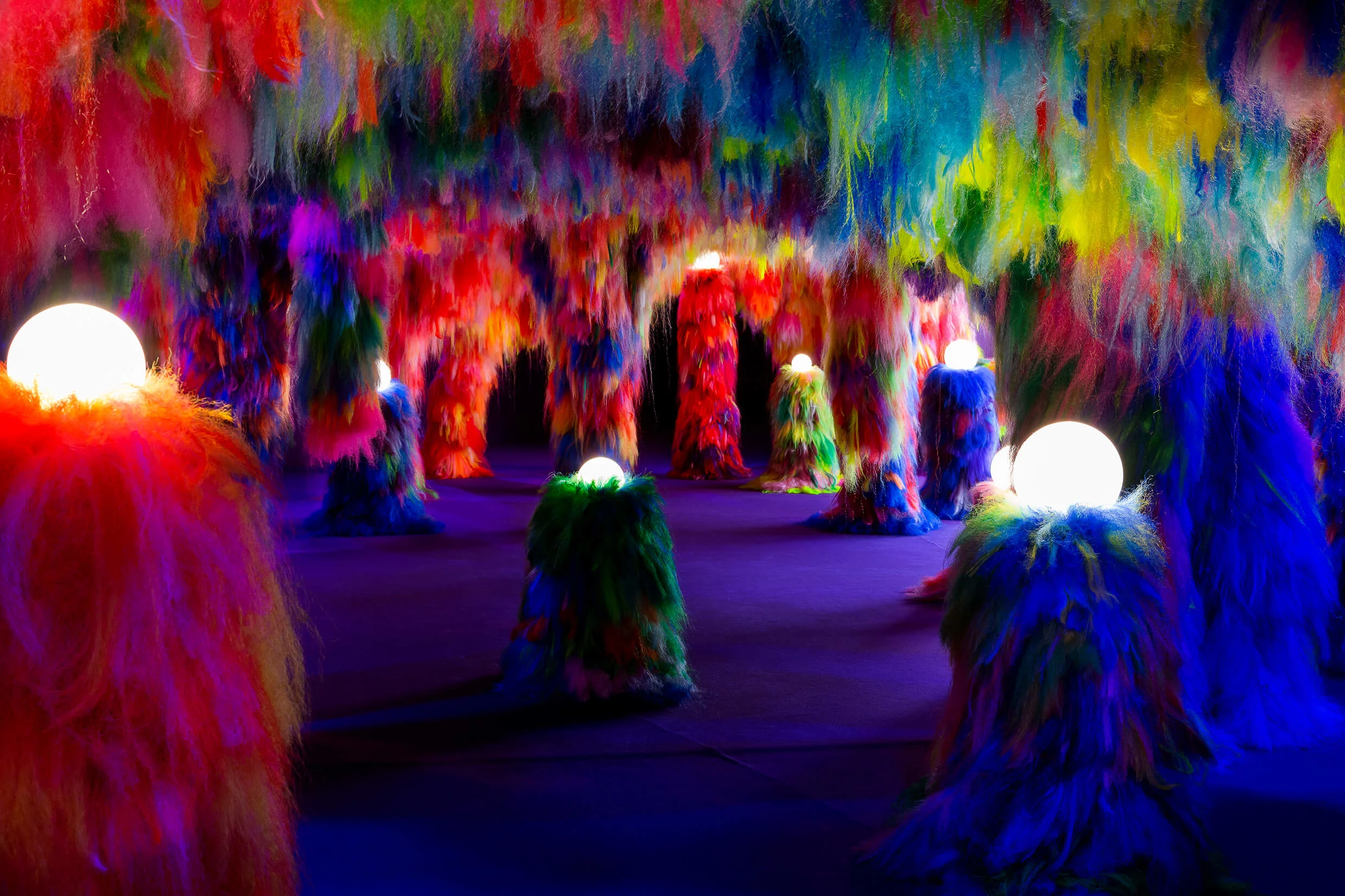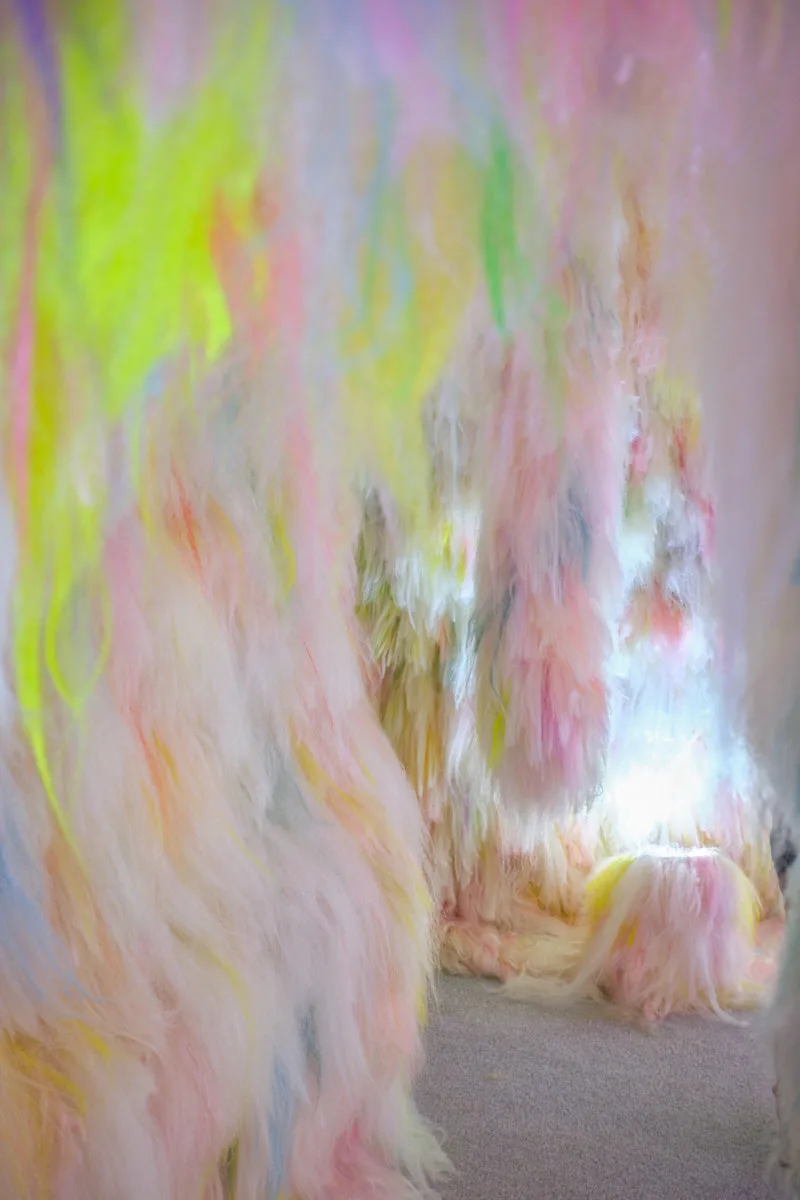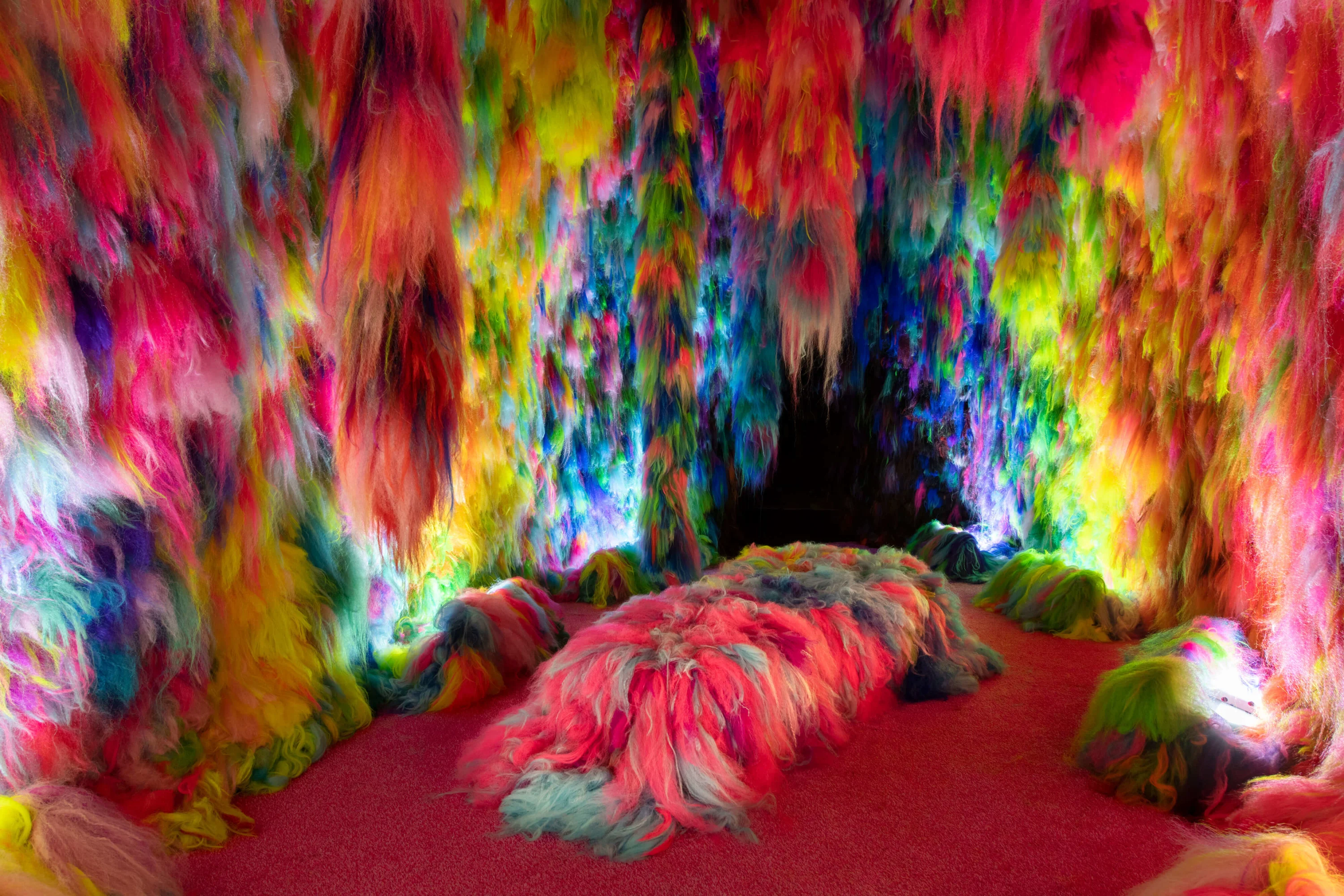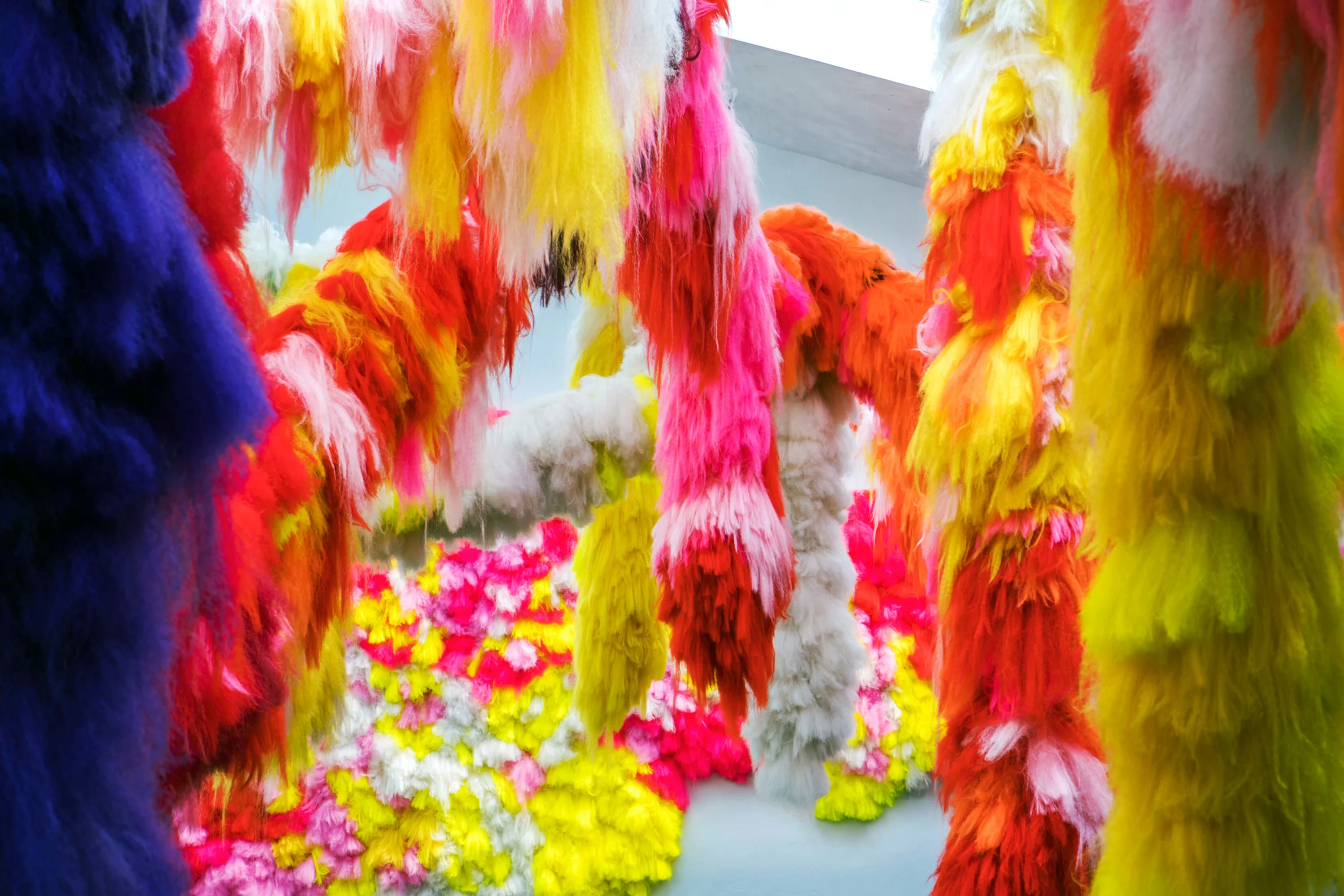

Shoplifter has risen to great acclaim for her fuzzy installations made from hair. It’s a material she’s incorporated into her work for years, constructing interactive environments for the likes of Moncler, Björk and the Icelandic Pavilion at the 2019 Venice Biennale. Here, Ayla Angelos chats to the Iceland-born and New York-based artist about her obsession with hair, the power of color psychology, and how she creates such textural, fluffy pieces that are designed to be touched.
Everyone has a story to tell about their hair; like the hours spent trying out a new do, spontaneously buzzing it off or adding in some color. Shoplifter – the pseudonym of artist Hrafnhildur Arnardóttir and a name that stuck after constant mispronunciation of her birth name – has many personal hair stories. The most memorable harks back to the time when she wanted to recreate the asymmetrical hairstyles of the 1980s. "I showed a picture of Boy George to my hairdresser and she didn’t have a clue what was in his hair,” she says, noting how Iceland was somewhat limiting when it came to accessing experimental fashion, extensions and materials. “I think I’m using synthetic hair in my work in response to some psychological damage from not being able to have the same extensions as Boy George.”

Besides being far too out-there for her hairdresser, there was another defining moment for Shoplifter growing up. She’d stumbled across one of her grandmother's braids, which had been cut off and stowed in her bedroom drawer. Shoplifter would occasionally peek at and observe the strand as if it were an object from a time capsule.
“I had this strange feeling that this braid represented her youth. It was almost like a portrait or photograph, but also like a dead object, and such a weird extension of her,” says Shoplifter. “There are a lot of unwritten rules of belonging,” she adds, “and I'm trying to communicate that through hair.”


There are a lot of unwritten rules of belonging, and I’m trying to communicate that through hair.

To observe the work of Shoplifter is like stepping into a rainbow-colored forest replete with textural, fluffy branches and wefts of neon-tinted leaves. The first thing you’ll notice is that it’s all made of hair, a component she’s been incorporating into her work for years. When she first began experimenting with it as a medium to work with, Shoplifter would only employ natural hair to form her pieces, but as the demand for her work increased, and thus multiplied in size, human hair was no longer a viable option. Instead, she transitioned into synthetics, which allowed her to experiment freely with colors and size, all without the expensive price tag.
When building her large-scale pieces, Shoplifter follows an impeccable, intuitive process. It all kicks off with the space itself, which serves as the catalyst and framework as to how the installations will take shape. She’ll envision the artwork in her head, “like a creeping moss or something like that”, and start transferring her ideas into the physical realm. “It’s a little bit of a dance,” she notes, “and a little bit like taming a beast to try and get it to deal with gravity and hang in a way that I find beautiful.”


I have to tame the hair to make it hang in a way that I find beautiful.

To achieve the more illusory structures – the ones that appear like a family of trees or vines wrapping around a house – she’ll gather the hair into bundles, before twisting them into pom poms and attaching them to a netting. Each piece can take at least a couple of months to complete, and there’s plenty of prep and teamwork added into the equation. She simply can’t do everything herself, and there’s a cohort of around 30 collaborators assisting her along the way. “It takes a village of people, a very hairy village,” she jests. Once the installations are finished, she’ll be sure to use the materials again (and again).
Within these formations, Shoplifter invites her visitors to touch and, more importantly, relax in her cartoonish environments. It’s a purposefully sensory, tactile experience, where the vibrant hues trigger dopamine in the brain. “It’s amazing to see how ecstatic, happy or calm the visitors feel, and it just seems to truly make them feel better. It’s a sudden euphoria or bliss, kind of like being amongst cherry blossoms.”

Shoplifter considers her installations to be more like an exaggerated version of nature, or “hyper-nature,” as she puts it. “You don’t have to get it or understand the work, because it’s really something that you just experience,” she explains. “Your guard comes down, and you let the vibration of the colors just float over you.” As much as Shoplifter wants you to let go and enjoy yourself in her creations, she does have a couple of rules you’ll need to follow if you do decide to visit. “You can touch it as if it were an old shy mammoth that you don't want to disturb,” she says.
It’s rare that the art-goer is encouraged to physically interact with the art itself in this way. It’s remedial; a place to come and recharge. It’s also going to do wonders for your mental health, which is exactly how Shoplifter feels while building each of her pieces. “I hope I never stop using hair, because it’s given me so much joy,” she says. “It just keeps the dullness away.”
Donate to the kickstarter to make Shoplifter's permanent culture center in Iceland a reality.

